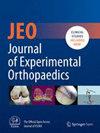Knee cartilage defects are a therapeutic challenge, often requiring multiple costly procedures with modest improvements. This study evaluates whether a one-stage minced cartilage autograft with platelet-rich plasma (PRP) improves clinical and radiological outcomes after at least 1 year.
A multicentric, non-randomized, retrospective analysis was conducted using data from two sports medicine centres. Sixty-six patients aged 18–50 years with symptomatic International Cartilage Repair Society Grade III/IV chondral defects underwent the minced cartilage autograft and PRP procedure between January 2021 and April 2023. The minimum follow-up was 1 year. Clinical scores for Knee Injury and Osteoarthritis Outcome Score (KOOS), International Knee Documentation Committee (IKDC) Score and Self Knee Value (SKV) were collected from medical records and by an independent examiner at the latest follow-up. Magnetic resonance imaging (MRI) assessments using the Magnetic Resonance Observation of Cartilage Repair Tissue (MOCART) 2.0 scoring system were performed at the latest follow-up in 46 patients (70%).
The mean follow-up was 20.5 ± 7.5 months. The study demonstrated significant improvements in knee function and pain relief following the minced cartilage autograft with the PRP procedure. The mean KOOS total score started from 45.3 to 71.5 points, mean KOOS pain started from 51.9 to 80.4 points, mean KOOS activities of daily living started from 62.1 to 85.3 points, mean KOOS symptoms started from 53.1 to 79 points, mean KOOS sports started from 38.7 to 74.8 points, mean KOOS quality of life started from 43.3 to 73.7 points. The mean IKDC score improved by 27.7 ± 15.7 points. All these scores have been significantly improved (p < 0.05). MRI assessments confirmed the successful integration of repair tissue with a mean MOCART 2.0 score of 80.5 ± 12.5 points.
The minced autograft cartilage technique with PRP provides favourable early clinical and radiological outcomes for limited chondral defects in the knee. This method offers a single-procedure approach with minimal grafting requirements and does not necessitate a laboratory or specialized personnel, unlike other techniques.
Level III retrospective multicentric study.



